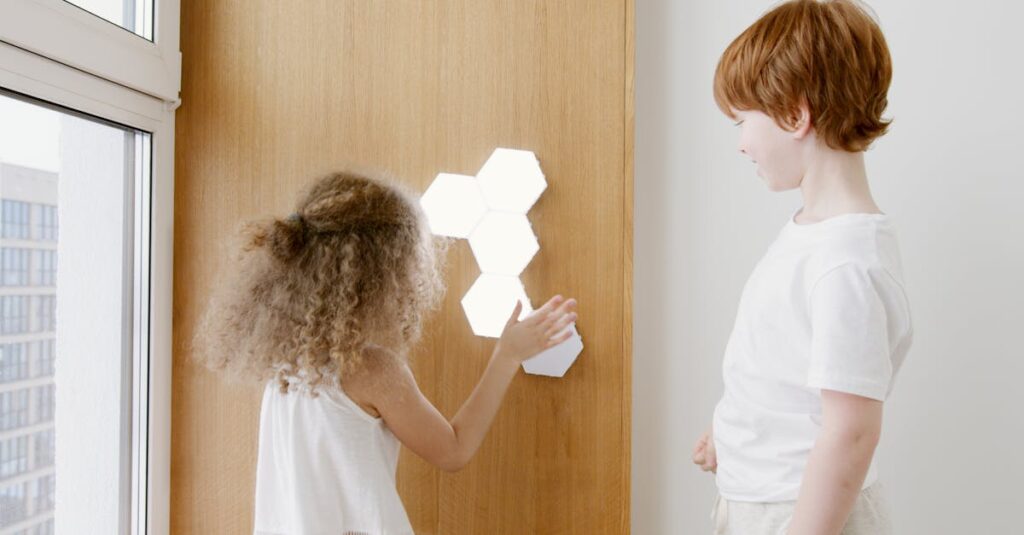Introduction
We’ve all been there: staring at a screen, struggling to focus, wondering why the words just won’t come. The coffee’s not working, your playlist isn’t helping, and your to-do list is glaring at you like a taskmaster. So, what’s missing? It might be something as simple as the lighting in your workspace. Believe it or not, the lighting around you can have a significant impact on your productivity, energy levels, and overall mood. And the best part? You don’t need to overhaul your entire office to reap the benefits.
In this article, we’ll explore a few smart lighting hacks that can take your productivity to the next level. Ready to make your workspace work for you? Let’s get started.
The Psychology of Light: Why It Matters
Before we get into the practical hacks, let’s take a moment to understand why lighting has such a powerful effect on our work. Have you ever noticed how your energy dips when you’re in a dimly lit room? Or how harsh, fluorescent lights seem to drain all the creativity from your brain? That’s no accident. The right lighting can elevate your mood, increase focus, and even regulate your circadian rhythm, which controls your sleep-wake cycle.
Research suggests that exposure to bright, natural light can improve cognitive function, boost alertness, and reduce the likelihood of mental fatigue. On the flip side, poor lighting can contribute to eye strain, headaches, and a general sense of lethargy. It’s clear that the right lighting can directly affect your productivity, now let’s explore some ways to optimize it.
Smart Lighting Hacks to Transform Your Workspace
1. Use Task Lighting for Focus
Imagine this: You’re working on an important project, trying to concentrate, but the general overhead lighting feels too dim or too harsh. Enter task lighting. Task lighting is lighting that’s directed at the area where you’re working, ensuring that you get enough light without overwhelming the entire room.
Instead of relying on a single ceiling light, consider using desk lamps, adjustable spotlights, or even smart bulbs that you can position just where you need them. If you’re working on a detailed task like reading, writing, or designing, proper task lighting can help reduce eye strain and make the experience much more comfortable.
Another great thing about smart bulbs is that you can adjust their brightness and color temperature. Want to mimic daylight during a long afternoon work session? Set your bulbs to a cool white. Need to wind down for the evening? Switch to a warm, yellow light.
2. Optimize Your Environment with Color Temperature
Speaking of color temperature, did you know that the hue of your lighting can also impact your mood and productivity? If you’ve ever been in an office where the lights felt like they were trying to mimic a hospital waiting room, you’ve experienced the power of poor lighting firsthand. Fluorescent bulbs that emit a harsh, cool light can create a sterile, uninviting atmosphere, making it harder to focus and engage creatively.
On the other hand, natural light or soft, warm lighting can create a more relaxed environment, encouraging creativity and making tasks feel less taxing. If you’re working on deep thinking or brainstorming, a warmer color might help you relax and let your ideas flow. But if you’re crunching numbers or analyzing data, cooler tones could help you stay sharp and alert.
Smart bulbs, once again, are the perfect solution here. You can change the color temperature based on the task at hand. Want a boost of focus in the morning? Go for a cooler white light. Need to wind down in the evening? Warm up the room with a cozy amber light.
3. Embrace Natural Light to Sync Your Circadian Rhythm
If there’s one thing that will seriously enhance your productivity, and your well-being, it’s natural light. Sunlight, that glorious resource we often take for granted, plays a critical role in regulating our circadian rhythm. A study from the University of Chicago found that exposure to natural light during the day increases alertness and cognitive function, while reducing the chance of burnout.
Of course, not everyone has the luxury of an office with plenty of windows, and even if you do, you can’t always control the weather. But this is where your smart lighting setup can help. Many smart lights allow you to set schedules, so you can simulate natural light patterns in your workspace. For instance, in the morning, you could program your lights to gradually brighten, mimicking the sunrise. In the evening, dim the lights slowly to resemble sunset and help prepare your brain for relaxation.
Don’t forget about positioning! If you can, try to sit near windows, facing the natural light. Studies have shown that people who work near natural light tend to be more productive and happier at work.
4. Create Mood Lighting for Creativity and Relaxation
Sometimes, the best way to boost productivity isn’t by cranking up the brightness, but by setting the right mood. If you’re working on a creative project or trying to spark inspiration, a well-chosen light ambiance can work wonders.
With smart lights, you can easily set your workspace to whatever mood you need: energizing, calming, or even playful. Want a burst of creativity? Try a soft blue light to encourage a cool, tranquil atmosphere. Feeling stuck on a task? Shift to a yellow or green hue to stimulate your brain. And if you’re working late into the evening and need a soothing environment, consider dimming the lights and switching to a calming purple or soft white.
With the ability to adjust color and brightness instantly, you can create an atmosphere that suits your needs and boosts your focus, without getting distracted by your lighting setup.
Conclusion: Small Changes, Big Results
It’s easy to overlook the effect that lighting has on your workday, but as we’ve seen, small adjustments can have a huge impact on your productivity, energy, and overall mood. Whether you’re using task lighting to focus, adjusting color temperatures for different tasks, or syncing your lights to your natural rhythms, smart lighting offers a simple yet powerful way to optimize your workspace.
The best part? You don’t need to be an interior designer or tech expert to reap the benefits. A few smart bulbs, a bit of experimentation, and some thoughtful planning can turn your workspace into a productivity powerhouse. And who knows? That next big idea or breakthrough might just come to you when the lighting is perfect.
So go ahead, brighten up your workspace and watch your productivity soar!

